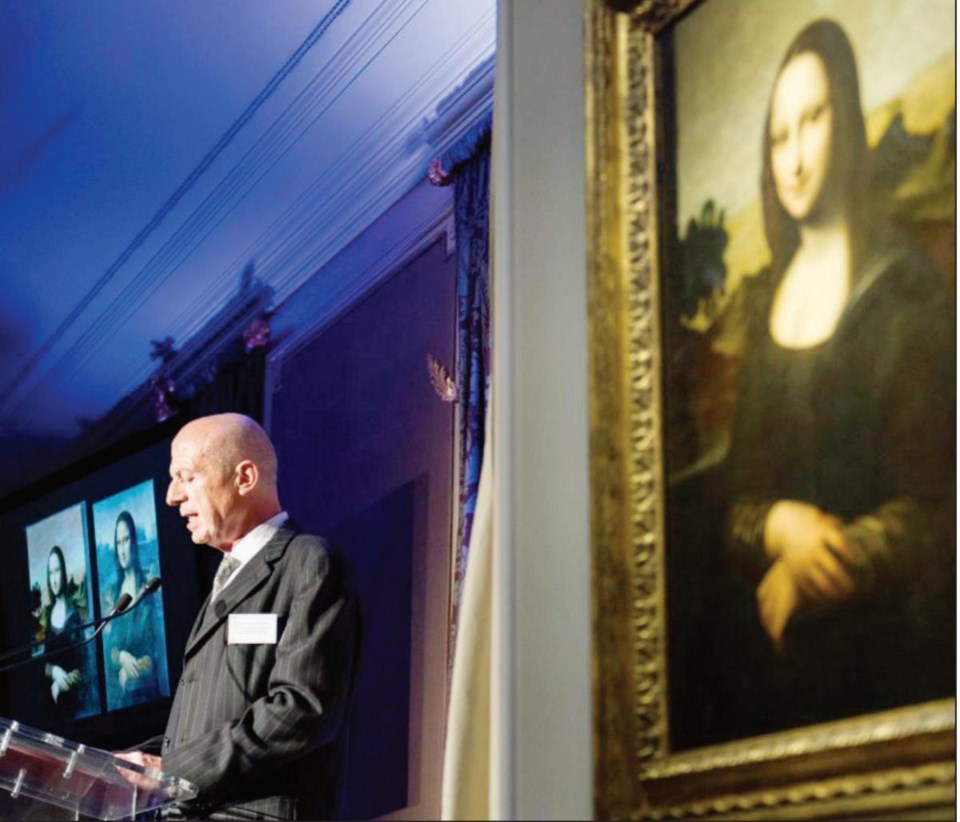The mystery behind the most enigmatic smile in art - Leonardo da Vinci's Mona Lisa - just got a little more complicated.
In a coming-out party of sorts in Geneva, Switzerland, rounds of flashbulbs popped Thursday as the non-profit Mona Lisa Foundation pulled back the curtain to present what it claims is a predecessor of the world's most famous portrait.
But even the experts brought in by the foundation weren't sure about that claim just yet.
The art world is prone to all sorts of rumours and speculation - and, periodically - discoveries that jolt accepted norms. Two years ago, a retired French electrician claimed that he had turned up 271 Picasso works that had been sitting for decades in his garage - and Picasso's heirs claimed theft.
But a new claim about the world's most famous painting, which draws millions of visitors to Paris' Louvre Museum each year, resonates like a thunderclap in the art world. It also prompts a new look at a painting that all by itself still raises a lot of questions for experts - not least the timeless "Is she smiling or not?"
The Isleworth Mona Lisa features a dark-haired young woman with her arms crossed against a distant backdrop. The foundation insists it's no copy but an earlier version of the Louvre masterpiece.
At the presentation, Alessandro Vezzosi, director of the Museo Ideale Leonardo da Vinci, said the painting was intriguing but needs further study. He declined to line up behind the foundation's claims that it was truly a Mona Lisa predecessor painted by da Vinci.
Ever since the 16th century, several historical sources suggest that da Vinci painted two Mona Lisa versions. One was of Mona Lisa Gherardo around 1503 that was commissioned by her husband, Francesco del Giocondo, the foundation said.
Another - the one in the Louvre - was completed in 1517 for Giuliano de Medici, da Vinci's patron. That theory fits with da Vinci's tendency at times to paint two versions of some of his works, like the Virgin of the Rocks, the group said.
Foundation members say it's unrealistic to think that the woman sat twice for a portrait, but that the meticulous, mathematical approach suggested that Da Vinci may have projected in his mind what she would have looked like between the first alleged Mona Lisa and the Mona Lisa in the Louvre.
However, the foundation acknowledged that the Isleworth Mona Lisa remains unfinished, and that da Vinci didn't paint all parts of the work. Still, the group pointed to newly discovered evidence in 2005 from Heidelberg, Germany, that suggested da Vinci was working on at least the head of such a painting in 1503.
The Isleworth painting first came to public light after British art collector Hugh Blaker found it in the home of a nobleman in Somerset, England, before the First World War, said Robert Meyrick, head of the art school at Wales' Aberystwyth University.
Blaker bought the painting and took it to his private studio in Isleworth outside London. U.S. and British newspapers, meanwhile, speculated even then that it might be a da Vinci. But at that time only art experts - not high-tech science tests like the ones conducted by the foundation - could judge its possible bona fides.



